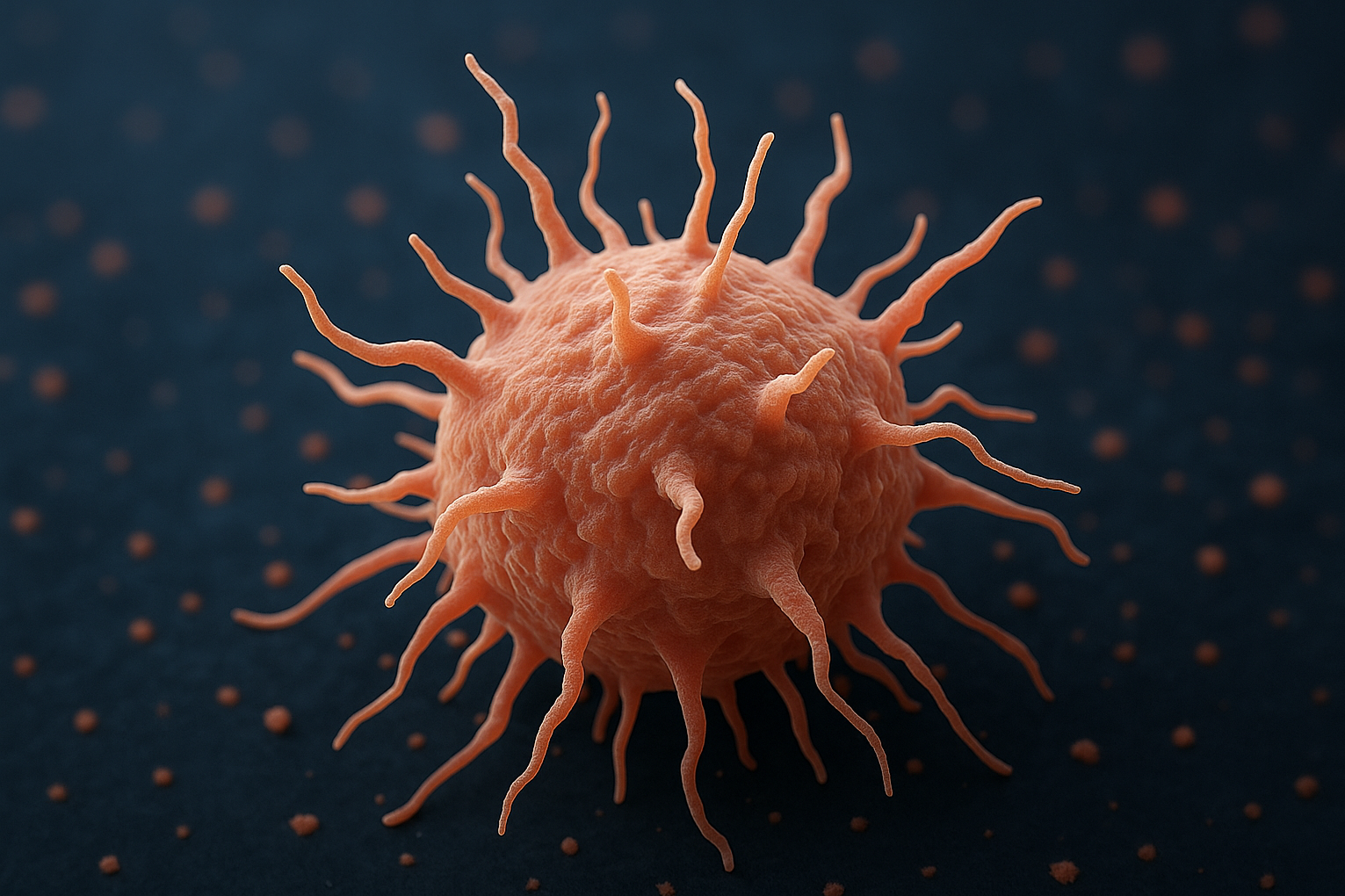
(Vienna, 11 August 2025) Defending the body against pathogens is a feat of strength that must be performed with great precision and speed. A research team from MedUni Vienna and CeMM, led by Christoph Bock and Matthias Farlik, has investigated how immune cells accomplish this task. Their study, published in the journal Cell Systems, provides an analysis of the molecular processes in the ‘scavenger cells’ (macrophages) of our immune system as they fight various pathogens. The researchers developed a new method using CRISPR gene editing and machine learning to identify the regulators of the immune response in macrophages.
Macrophages (Greek for "big eaters") deserve their name: their job is to recognize invading pathogens such as bacteria or viruses, engulf them and break them down into their biochemical building blocks. Macrophages are also messengers: they release various signals to recruit other immune cells, trigger inflammation, and present digested fragments of pathogens on their surface, guiding the adaptive immune system to develop long-term immunity.
Macrophages encountering a pathogen are under immense pressure. If they react too late or not decisively enough, an infection may become fatal. But an overshooting immune response is equally damaging. Within a very short time, a tailored immune response must be initiated: cascades of biochemical reactions triggered, thousands of genes activated, and an arsenal of substances produced—each response tailored to the specific pathogen encountered.
Network of Regulators Uncovered
To understand how macrophages coordinate this multitude of tasks, the team led by Christoph Bock (CeMM Principal Investigator and Professor at MedUni Vienna) and Matthias Farlik (Principal Investigator at the MedUni Vienna) exposed macrophages from mice to various immune stimuli that mimic bacterial or viral infections. They tracked the changes inside the cells by measuring gene activity and DNA accessibility every few hours, establishing a molecular timeline of how the regulatory programs unfold step by step.
Next, the team identified regulatory proteins that orchestrate these programs, using CRISPR genome editing to produce hundreds of gene knockouts and single-cell RNA sequencing to characterize the genetically perturbed cells. This innovative method uncovered a network of several dozen regulators that share the responsibility of triggering the most appropriate immune response. The identified regulators include many "usual suspects" such as the JAK-STAT signaling pathway, but also splicing factors and chromatin regulators whose role in immune regulation is not well understood.
"It is impressive how much complexity there is in this ancient part of our immune system, which we share with sponges, jellyfish and corals," says senior author Christoph Bock. "Thanks to the advances in CRISPR screening technology, we can systematically study the underlying regulatory programs."
Publikation: Cell Systems
Integrated time-series analysis and high-content CRISPR screening delineate the dynamics of macrophage immune regulation
Peter Traxler*, Stephan Reichl*, Lukas Folkman, Lisa Shaw, Victoria Fife, Amelie Nemc, Djurdja Pasajlic, Anna Kusienicka, Daniele Barreca, Nikolaus Fortelny, André F. Rendeiro, Florian Halbritter, Wolfgang Weninger, Thomas Decker, Matthias Farlik#, Christoph Bock# (* Shared first authors /# Shared senior authors)
DOI: 10.1016/j.cels.2025.101346